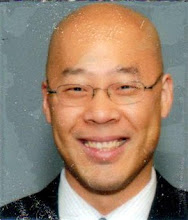Civil Procedure (2005-2006)
VII. JOINDER
A. Claim Joinder
1. Rule 18
a. Once there is one claim, a party may join as many claims as it has against the opponent.
b. Once there is a claim, a party may join as many remedies as it may have against opponent.
2. SMJ required for each claim
3. If claim not related, court may sever by Rule 42
B. Counterclaims and Cross-Claims
1. Rule 13(a) – Compulsory Counterclaim
a. At the time of serving Answer
b. Arising from “same transaction or occurrence” – Logical relationship test
i. Precise identity not required as long as claims are logically connected. [Appletree v. City of Hartford – Police officer can counterclaim for libel against plaintiff who filed for false arrest]
ii. Essential facts of various claims are “so logically connected that considerations of judicial economy and fairness dictate that all the issues be resolved in one lawsuit.” [Hart v. Clayton-Parker – Where claim is for abusive debt collection practice under federal statute, and counterclaim is for private duty under state law, facts not logically connected, counterclaim permissive]
c. Does not require adding a party court has no PJ over
d. Rule preclusion: Must assert compulsory counterclaim unless:
i. claim does not yet exist when pleading was served; or
ii. claim requires unobtainable new parties; or
iii. claim is pending elsewhere; or
iv. suit was under in rem jurisdiction and pleader is asserting no counterclaims
e. No need to find SMJ (covered by supplemental jurisdiction)
f. In other words:
i. Against an opposing party
ii. Same transaction or occurrence
iii. Exist at time opposing party’s pleading is served
2. Rule 13(b) – Permissive Counterclaim
a. Does not require “same transaction or occurrence”
b. SMJ required
3. Rule 13(c) – Relief – Counterclaim need demand relief less exceeding in amount or different in kind from original claim
4. Rule 13(e) (with Rule 15(d)) – Immature Counterclaim – Claim which matured or was acquired by pleader after serving pleading may become counterclaim by permission of court
5. Rule 13(f) (with Rule 15) – Omitted Counterclaim – Counterclaim omitted due to oversight, inadvertence, or excusable neglect may be added by amendment by leave of court
6. Rule 13(g) – Cross-Claim
a. Must arise from “same transaction or occurrence” as main claim
b. Must not be opposing parties
c. Works partly like impleader under Rule 14 (may claim cross-claim defendant is liable in part or total to cross-claim plaintiff for claims against him by original plaintiff)
d. Once properly filed, must add related claims to avoid claim preclusion
e. Once properly filed, can file other claims under Rule 18 subject to severance under Rule 42
f. Never compulsory
g. Counterclaims to cross-claims follow Rules 13(a) and (b)
7. Rule 13(h) – Joinder of Additional Parties – Party asserting counterclaim or cross-claim may add new parties as defendants to that claim under Rules 19 and 20.
8. Rule 13(i) – Separate Trials – Claim may be severed even if claim lacks independent SMJ.
9. California: Everything is a cross-complaint
C. Rule 14 – Impleader – Defendant may act as 3rd party plaintiff and implead 3rd party defendant if claim will be derivative of primary claim.
1. In response to 3rd party complaint, 3rd party defendant:
a. Must assert any defenses it has against 3rd party plaintiff under Rule 12
b. Must/may assert any counterclaims against 3rd party plaintiff under Rules 13(a) and (b)
c. May assert any cross-claims against other 3rd party defendants under Rules 13 and 18
d. May assert any defenses 3rd party plaintiff has against plaintiff (but not lack of PJ or lack of notice, which are personal)
e. May assert any claims against Plaintiff from same transaction or occurrence as plaintiff’s claim against 3rd party plaintiff
2. Plaintiff may assert:
a. Any claim against 3rd party defendant from same transaction or occurrence as plaintiff’s claim against 3rd party plaintiff
b. 3rd party defendant may/must assert defenses, counterclaims, and cross-claims
3. When third party’s conduct is complete defense against defendant’s liability, it should be a defense, and impleader is improper. [Toberman v. Copas – Defendant in auto accident tried to implead trucking company on theory it is liable instead of him]
4. Where more than two explanations exist, impleader of third party to establish either/or liability is improper. [United States v. Joe Grasso & Son, Inc. – Shrimp boat captains’ liability does not follow automatically from lack of liability on part of shrimp boat owners]
D. Rule 20 – Permissive Party Joinder
1. All persons may join as plaintiff if:
a. They assert rights from same transaction or occurrence; and
b. Any question of law or fact common to all plaintiffs will arise
2. All persons may be joined as defendant if:
a. Right asserted against them arise from same transaction or occurrence; and
b. Any question of law or fact common to all defendants will arise
3. (b) Court can prevent delay, expense or prejudice by ordering separate trials, etc.
4. Mosley v. General Motors Corp. – Class action Title VII discrimination suit arises from same question of law or fact even where individual claims are weak.
E. Rule 19 – Compulsory Party Joinder
1. (a) Unless joinder is infeasible because nonparty is:
a. beyond PJ of court or
b. adding nonparty would deprive court of SMJ or
c. after joining, venue becomes improper and nonparty objects,
Court must join as party if
d. complete relief impossible without nonparty, or
e. nonparty has interest relating to subject of suit and if nonparty left out, then
i. nonparty’s ability to protect interest may be practically impaired, or
ii. current parties would be at substantial risk of double or inconsistent obligations
2. (b) If joinder is not feasible, court must decide whether nonparty is indispensable:
a. if indispensable, must dismiss case for nonjoinder
b. if not indispensable, keep going with nonparty
3. Indispensability factors:
a. prejudice to nonparty from judgment without nonparty
b. prejudice to current parties from judgment without nonparty
c. the extent to which the court can lessen prejudice by shaping relief or other measures
d. adequacy of judgment without nonparty
e. adequacy of plaintiff’s remedy if the action is dismissed for nonjoinder
4. Temple v. Synthes Corp. – Joint tortfeasors in case of broken surgical implant are not indispensable parties.
[lawschool]
[outline]
[civil_procedure]
[due_process]




